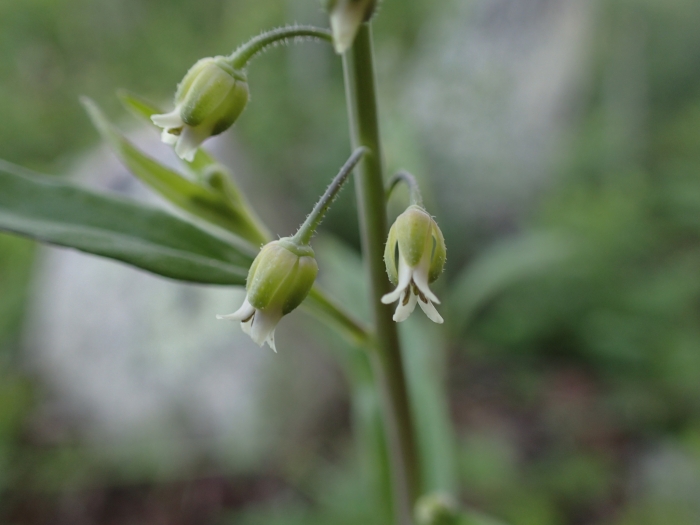Sicklepod
(Borodinia canadensis)
Sicklepod (Borodinia canadensis)
/
/

Evan M. Raskin
CC BY 4.0
Image By:
Evan M. Raskin
Recorded By:
Copyright:
CC BY 4.0
Copyright Notice:
Photo by: Evan M. Raskin | License Type: CC BY 4.0 | License URL: http://creativecommons.org/licenses/by/4.0/ | Rights Holder: Evan M. Raskin | Publisher: iNaturalist | Date Created: 2017-05-19T08:28:17-07:00 |

















































Estimated Native Range
Summary
Borodinia canadensis, commonly known as Sicklepod, is a deciduous biennial herb native to the understory of deciduous forests, particularly those with rich, moist soils in the Eastern United States and Ontario. It typically grows to a height and width of 1-3 feet (0.3-0.9 meters). The plant features compound leaves and bears small, white and green flowers in the summer, which are not particularly showy but are attractive to pollinators. The seed pods are curved, resembling a sickle, hence the common name.
Sicklepod is valued for its ability to thrive in shaded conditions, making it suitable for woodland gardens and naturalized areas. It is also used in restoration projects due to its native status and the role it plays in supporting local ecosystems. In cultivation, it prefers part shade to full shade and does well with low to medium amounts of water. It is adaptable to various soil types, provided they have good drainage. While not commonly found in the horticultural trade, it can be a unique addition to a native plant garden. Care should be taken as it can self-seed and spread if conditions are favorable.CC BY-SA 4.0
Sicklepod is valued for its ability to thrive in shaded conditions, making it suitable for woodland gardens and naturalized areas. It is also used in restoration projects due to its native status and the role it plays in supporting local ecosystems. In cultivation, it prefers part shade to full shade and does well with low to medium amounts of water. It is adaptable to various soil types, provided they have good drainage. While not commonly found in the horticultural trade, it can be a unique addition to a native plant garden. Care should be taken as it can self-seed and spread if conditions are favorable.CC BY-SA 4.0
Plant Description
- Plant Type: Herb
- Height: 1-3 feet
- Width: 1-3 feet
- Growth Rate: Moderate
- Flower Color: White, Green
- Flowering Season: Summer
- Leaf Retention: Deciduous
Growth Requirements
- Sun: Part Shade, Full Shade
- Water: Medium
- Drainage: Fast, Medium
Common Uses
Border Plant, Low Maintenance, Rock Garden
Natural Habitat
Understory of deciduous forests with rich, moist soils
Other Names
Common Names: Canada Rockcress, Sicklepod Rockcress, Arabette Du Canada
Scientific Names: , Arabis canadensis, Borodinia canadensis, Boechera canadensis, Arabis ovata, Arabis cheiranthifolia, Erysimum canadense, Arabis mollis, Arabis falcata, Arabis hirsuta var. ovata
GBIF Accepted Name: Borodinia canadensis (L.) P.J.Alexander & Windham